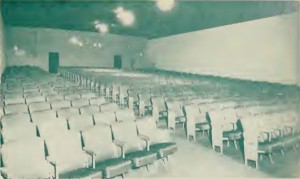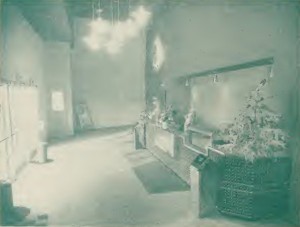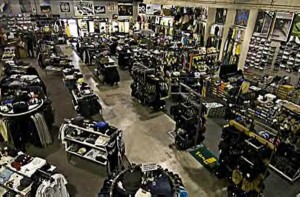Theatre structures have regularly posed a dilemma for property owners. While serving as potentially lucrative tenants and offering up considerable consumer drawing power, there is often a problematic issue once a theatre has run it’s coarse as a viable business. After movie goers have moved on, the property owner is left with a “white elephant”; a building which, by it’s very design, is both difficult to rent/sell and expensive to maintain.
Beginning in the late 1950’s, this problem became particularly palpable, as residential populations shifted towards outlying suburban communities, leaving behind the formerly thriving cinemas of urban downtown’s. A trend later exacerbated with the arrival of multiplexes and “modern” cinemas. In an attempt to circumvent the “white elephant” issue, the 60’s and 70’s saw an increase in theatres being designed as temporary configurations, which could be converted to alternative uses with a minimum of effort.
One Orange County example of these “disposable” theatres can be found in Buena Park. Today, the modest cinder block building ,standing at 7886 Beach Blvd, serves as the home for a popular skateboarding retail outlet. However, back in 1959, the structure opened as the “functionally modern” Electrovision Corp. Buena Park Theatre.
In stark contrast to the cavernous auditoriums and ornate designs of other county cinemas, the Buena Park was purposely designed “on the cheap”, with cinema specific features that could easily be altered or removed. Built for $75,000, the theatre featured a false auditorium floor (which could be removed to reveal a conventional level slab) and non load bearing internal framework (allowing the floor plan to be reconfigured readily). Even the venue’s box office, concession, and projection areas were designed for seamless removal; utilizing a minimalist approach for each. While serving up an under whelming moving going experience, the approach was unquestionably cost effective and, some forty years later, allowed for the theatre to live on as the Identity Boardshop.
The movement towards “disposable” theatres never caught on as an industry standard. While AMC utilized the idea heavily during their early 70’s national expansion (even going as far as to include ground floor projection booths in many locations), the concept transitioned more in to tighter design budgets, than truly temporary cinemas. At most, the “white elephant” issue may carry some of the blame for a generation of generic shoebox multiplexes, which plagued much of the cinema landscape throughout the 70’s and 80’s.
In an interesting bit of cyclical history, the present day exhibition industry is beginning to face the “white elephant” issue once again, as a generation of expensive, 20 – 30 screen, megaplexes become increasingly obsolete. Thus far, the reaction has been to build slightly smaller venues. However, one has to suspect it’s only a matter of time before someone revisits the idea of “disposable” theatres.
Tags: No Comments




